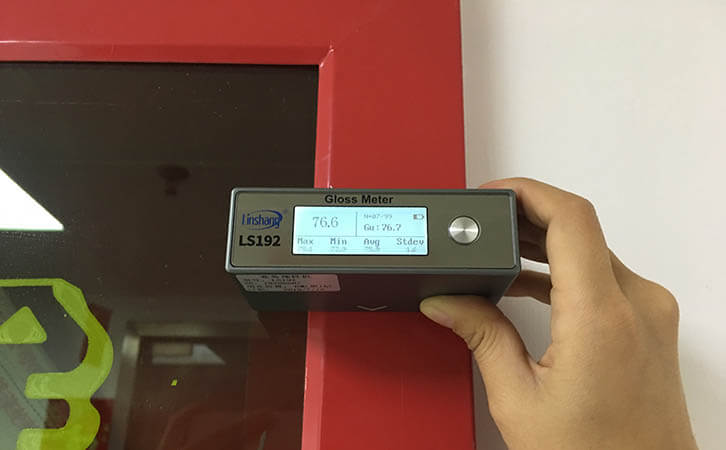Meaning of Gloss Value and Gloss Measurement | Gloss Meter
1. What is gloss and how is it measured?
Gloss is a characteristic of the object surface. We often say that the surface gloss of an object refers to the ability of the object surface to reflect light specularly. This is a relative measurement of the ability of an object's specular surface to reflect light under a set of specified geometric angle conditions.
Everyone should know about specular reflection in physics textbooks. If the object surface is smooth enough, when a beam of parallel light irradiates the plane mirror, it will still be reflected in one direction in parallel. This reflection method is called specular reflection. In real life, the surfaces of metal, porcelain and mirrors are very smooth. Their ability to reflect light on the mirror surface is strong.
As for the gloss measurement method, a commonly used method is to detect it with a gloss meter. The gloss meter used here is also called a specular gloss meter. It consists of incident light transmitter, receiver, standard board and other structures. The measured gloss is based on black glass with refractive index np = 1.567. Assuming that the plane is ideally polished, the plane is used for natural light beams. Perform specular reflection and define a gloss value of 100.0 gloss units at this time. Then, under the same conditions, the reflected light flux of the object surface is divided by the reflected light flux of the standard board to obtain the relative value of the object surface gloss.
2. The meaning of the gloss value
After we understand the gloss measurement method and then look at the meaning of the gloss value. It is not difficult to find that this is a dimensionless measurement based on a standard board, which is precisely the object surface when it is illuminated by light. The ratio of the reflectivity of light to the reflectance of a standard surface. Its formula is G = 100R / R, where G is the abbreviation of gloss and R is the reflectivity of the object surface to light and the surface of the standard board reflectivity. The standard board here is defined as 100, so multiply by 100.
The surface gloss value of an object generally uses GU to represent the gloss unit, which is the abbreviation of the English gloss unit. As an analogy: if there is no unit of mass (no kilograms or anything), we can call a certain mass a unit of mass and the unit of mass is: mass unit. The unit of glossiness is in accordance with JIS. The unit of glossiness may be% or a number.
3. The larger the gloss value, the brighter the surface?
Generally speaking, under the same measurement conditions, this sentence is correct, but under different measurement angles, the measured glossiness will be biased. Therefore, the gloss values can only be compared with each other under the same conditions of the same gloss meter. If the measuring instruments and measurement angles are not the same, the measured gloss values cannot be compared with each other.
Therefore, when the user needs to detect the gloss of the product, he needs to choose the same gloss meter and measure it at a specified angle. Linshang universal 60-degree gloss meter LS192 is highly recommended. The measurement range can reach 1000GU. Both high-gloss and low-gloss materials can be tested because the gloss is a relative value. It can be used when there is no uniform standard in the industry. If the industry has a uniform standard, it is best to use the same angle of testing. When selecting the measurement angle, you should choose differently according to different situations.
